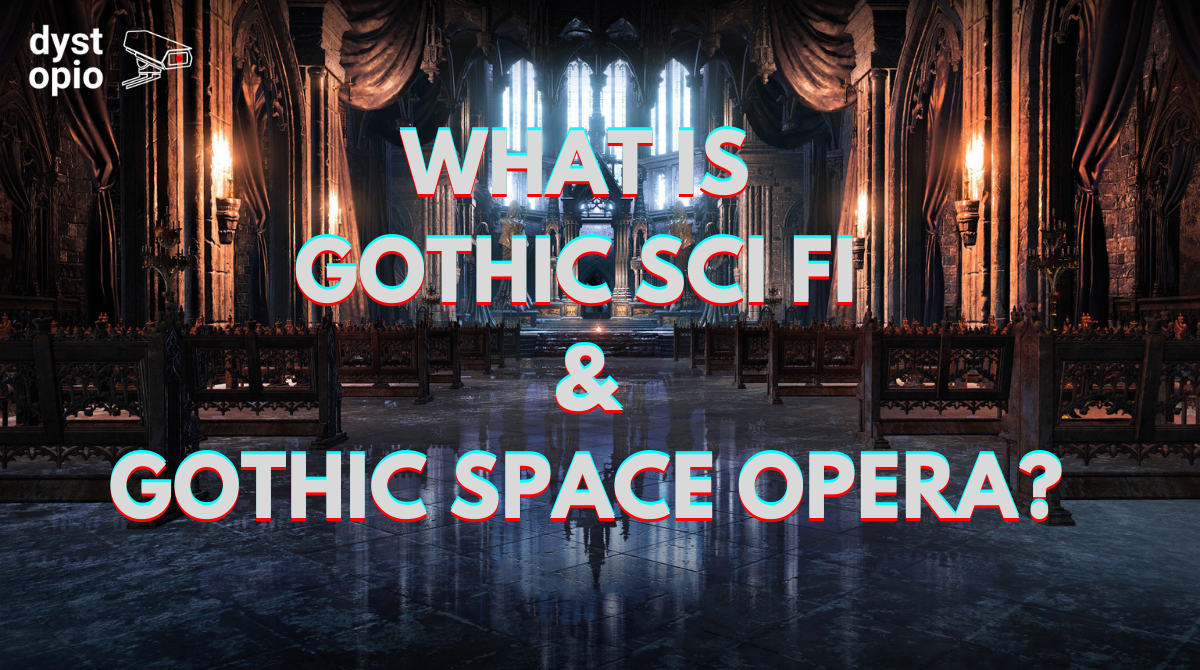What is Gothic Science Fiction & Gothic Space Opera?
Contents
Gothic science fiction (or gothfic) is a subgenre of science fiction that draws on the conventions and imagery of the Gothic novel, particularly its use of dark fantasy elements such as ghosts, vampires, werewolves, witches, and other supernatural creatures.
The genre has been around for decades, but it was not until the early 1990s that it became widely recognized by critics and writers who began to label their work “gothic” or “dark” science fiction. It has since become a major part of contemporary science fiction literature.
Origins of Gothic Science Fiction
The term “Gothic” has been used to describe a number of literary genres, from the gothic novel and gothic horror to the gothic film and gothic music. The term was first coined by Edgar Allan Poe in 1845 as an adjective for his short story collection TALES OF THE GHOST-WORLD (1843). He wrote that the stories he called “the GOTHIC” had “an atmosphere of gloom and mystery which is felt rather than seen.”.
In the mid-19th century, the word came to be associated with Romanticism, especially in Germany where poets like Heinrich von Kleist and Novalis explored ideas about death, madness, and despair.
In the late 19th century, the gothic novel gained popularity in England and America. The most famous example of this novel form is Bram Stoker’s Dracula, published in 1897. This book is often considered the origin of modern vampire fiction. Other authors who contributed to the development of the gothic novel include Algernon Blackwood, M.R. James, H.P. Lovecraft, Sheridan Le Fanu, and Robert Louis Stevenson.
Although these authors are sometimes grouped together under the heading of “new gothic writers,” they did not write exclusively gothic novels. They also wrote other kinds of works, including detective fiction, ghost stories, and historical romances. However, because of the association between the gothic novel, gothic horror, and gothic music, many people now refer to all three forms collectively as “gothic.”
In the 1980s, the gothic film genre emerged. Examples of this kind of movie include Wes Craven’s A NIGHTMARE ON ELM STREET (1984), John Carpenter’s VAMPIRE HUNTER (1986), David Cronenberg’s VIDEODROME (1983), and Tim Burton’s PEE WEE’S BIG TRIP (1985). These films typically combine elements of horror, suspense, and comedy. Some have even incorporated musical numbers into their plots.
Gothic Fiction Themes
There are two main schools of thought regarding what makes a piece of art Gothic: one school argues that a work must contain at least some supernatural element, while the other school holds that any work can be labeled Gothic if it contains enough darkness and terror. In either case, the Gothic is primarily defined by its mood. For instance, Joss Whedon’s television series ANGEL (1999–2004) is frequently classified as Gothic because of its focus on evil and vampirism.
Gothic Space Opera Themes
A notable recent trend in gothic science fiction is the rise of gothic space operas. These works usually involve an interstellar civilization that has developed advanced technology, but whose society is ruled by superstition and fear.
Many of them draw heavily on the themes found in classic gothic novels, such as Frankenstein, Dracula, and The Picture of Dorian Gray. One of the earliest examples of this type of work is Larry Niven’s ADEPT WORLD (1977). More recently, the best known example of this kind of work is Orson Scott Card’s NOVELLA (1987).
Other examples of gothic space opera include Greg Bear’s EON (1982), Gene Wolfe’s Book of the New Sun (1980), Brian Aldiss’s The Long Afternoon of Earth (1973), Jack Vance’s Dying Earth series (1966–1990), and Frank Herbert’s Dune (1965–1968).
Warhammer 40,000
Warhammer 40,000, originating as a table top game that has now spanned into video games, books, movies, and more, is possibly the most up-front gothic space opera in modern pop culture. It was created by Games Workshop Ltd., which also produces Warhammer Fantasy Roleplay, another tabletop role playing game.
The setting for Warhammer 40,000 takes place in a far future where humanity has spread across the galaxy. There are several races within the universe; however, humans are divided into many different major factions based on their political views, race, and/or religious alignment.
At that same time, Warhammer 40k factions all look eerily similar to gothic creatures of old as well as some fantasy creatures. The followers of the plague god Nurgle are akin to zombies, the Space Wolves of one of humanity’s space marine legions are de-facto werewolves, the mummy-like Necrons, etc.
You get the idea.
The series is not shy about being a gothic space opera, often boasting about its “grim-dark” lore and setting.
Gothic Space Opera
Gothic Space Opera is a subgenre of science fiction. It combines elements of horror, suspense and comedy with a strong emphasis on atmosphere and mood. Gothic space opera often involves an intergalactic or extra-planetary civilization, who may be technologically advanced but still governed by superstition and fear, and sometimes by dark magic.
Subscribe to Dystopio today and get notified when new dystopian books and novels are released!

